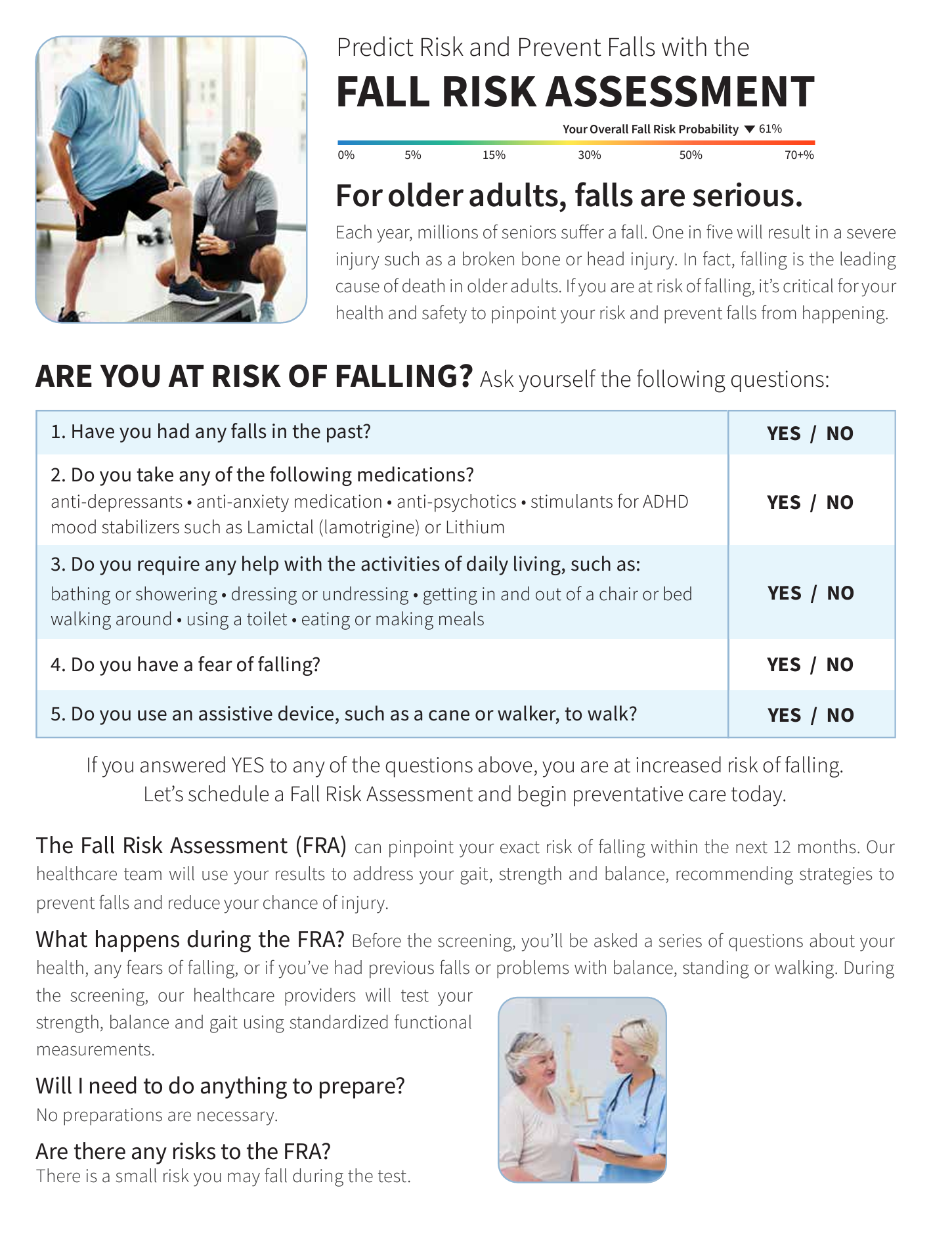Things about Dementia Fall Risk
Things about Dementia Fall Risk
Blog Article
The 4-Minute Rule for Dementia Fall Risk
Table of ContentsDementia Fall Risk Fundamentals ExplainedThe 25-Second Trick For Dementia Fall RiskNot known Facts About Dementia Fall RiskThe Basic Principles Of Dementia Fall Risk 8 Simple Techniques For Dementia Fall Risk
Based on indications and symptoms, such as proof of head injury or a new focal neurologic deficiency, computed tomography or MRI of the brain might be suggested. An assessment for root causes of syncope must be carried out only if there is strong suspicion, as in the instance of recurrent, unexplained falls
Healthcare providers use an autumn threat evaluation to recognize your risk elements for falling and make helpful suggestions. A loss risk assessment is crucial because understanding which elements enhance your opportunities of dropping assists you: Reduce your danger of falling or injuring on your own.
All grownups 65 years and older must have a preliminary fall threat screening. Have dropped in the past year. Worry regarding falling.
Some Known Details About Dementia Fall Risk

Discover this thorough nursing care plan and management guide to successfully protect against risk for drops among people. Acquire essential understanding regarding the nursing analysis, taking care of diagnosis, and goals particularly tailored to individuals that go to threat for drops. A is specified as an event that causes an individual coming to rest unintentionally on the ground or flooring or various other lower degree (WHO, 2021).
Dropping is the 2nd leading cause of fatality from unintentional injuries around the world. It is approximated that fall fatality rates in the United state
The smart Trick of Dementia Fall Risk That Nobody is Talking About
If this rate continues, the CDC anticipates seven loss fatalities every hour by 2030.
Each year, over 800,000 patients are hospitalized because of drops. Registered nurses play a significant function in protecting against drops for their people via education, evaluating fall risk, creating more secure environments, and providing treatments in protecting against injuries from drops.
Loss are due to a number of elements, and an all natural technique to the specific and setting is essential. Suppose an individual is considered at high risk for drops after the screening.
Indicators on Dementia Fall Risk You Need To Know
A calls for using a verified tool that researchers have taken a website here look at to be useful in naming the reasons of drops in a person. As a person's health and wellness and conditions change, reassessment is called for. The degree of autumn danger can be figured out using the analysis of inherent and external factors. Requirement analysis devices can additionally be used (gone over listed below).
Individuals are most likely to fall once more if they have actually sustained one or more falls in the previous 6 months. The older populace is at enhanced danger of fall-related readmissions based on a study recognizing the variables predictive of repeat falls linked end results (Prabhakaran et al., 2020). Persons with damaged understanding and disorientation may not understand where they are or what to do to help themselves.
The ability of people to secure themselves from drops is affected by such factors as age and advancement. Click This Link Older individuals with weak muscular tissues are a lot more most likely to fall than those who keep muscle stamina, versatility, and endurance.
The Best Guide To Dementia Fall Risk
Less comparison level of sensitivity was fairly linked with both raised prices of drops and various other injuries, while lowered aesthetic acuity was only connected with enhanced fall content price (Timber et al., 2011). Sensory understanding of ecological stimuli is critical to safety. Vision and listening to disability limit the patient's capacity to regard hazards in the environments.
Older adults that have bad balance or problem walking are a lot more likely to drop., or other clinical conditions and therapies., and use of psychotropic medicines (Stanmore et al., 2013).
Report this page